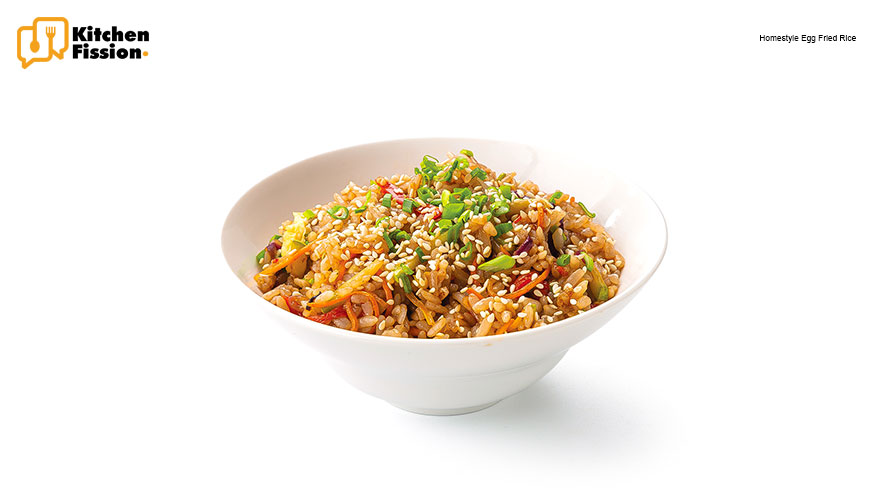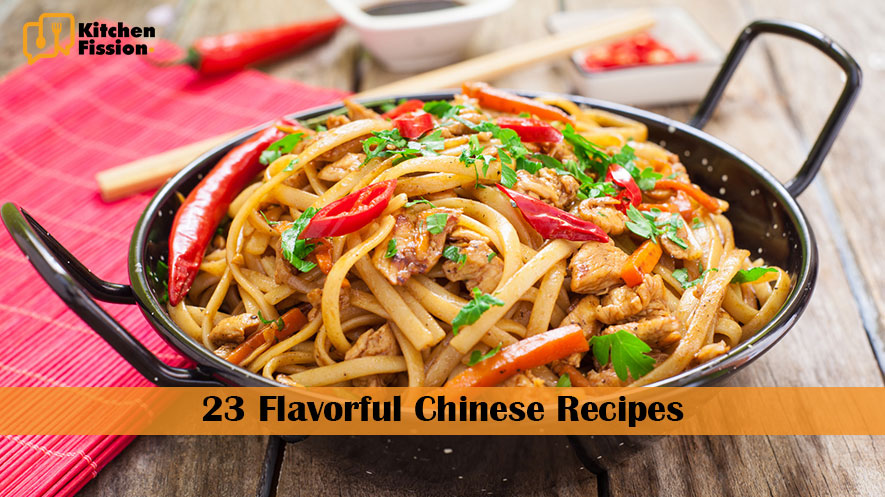Chinese cuisine is celebrated worldwide for its intricate flavors, diverse ingredients, and rich cultural heritage. From savory stir-fries to delectable dumplings, the culinary landscape of China offers an array of tantalizing dishes that captivate taste buds and evoke a sense of adventure. In this article, we delve into the heart of Chinese cooking, presenting 23 flavorful Chinese recipes that will transport you to the bustling streets of Beijing, the serene landscapes of Sichuan, and beyond. Whether you’re a seasoned cook or a beginner, these dishes will ignite your passion for creating authentic Chinese flavors in your kitchen.
Classic Kung Pao Chicken:
Kung Pao Chicken, also known as Gong Bao Ji Ding, is a beloved classic in Chinese recipes that hails from the Sichuan province. This dish is renowned for its bold and flavorful combination of tender chicken, crunchy peanuts, and a spicy-sweet sauce. Let’s delve into the key features and elements that make Classic Kung Pao Chicken an enduring favorite:
1. Ingredients:
Chicken: Typically, boneless chicken breast or thigh is used. The chicken is diced into bite-sized pieces.
Peanuts: Roasted peanuts add a delightful crunch and nutty flavor to the dish.
Vegetables: Sliced bell peppers and scallions are often included for color, flavor, and texture.
Dried Red Chilies: These fiery peppers provide the signature heat in Kung Pao Chicken.
Sichuan Peppercorns: These unique peppercorns create a numbing sensation and complement the spicy elements.
Garlic and Ginger: These aromatic ingredients enhance the overall flavor profile.
Soy Sauce: Provides a savory umami base.
Rice Wine Vinegar: Adds a hint of tanginess.
Sugar: Balances the spiciness with a touch of sweetness.
Sesame Oil: Infuses a rich, toasted aroma.
2. Preparation:
The chicken is marinated in a mixture of soy sauce, rice wine vinegar, and cornstarch, which gives it a tender and flavorful coating.
The sauce is typically made by combining soy sauce, sugar, rice wine vinegar, and sometimes chicken or vegetable broth.
The dish is stir-fried in a wok or large skillet, using high heat to achieve the desired smoky wok hei flavor.
Sichuan peppercorns and dried red chilies are added to the hot oil at the beginning of cooking, infusing the dish with their unique spice and aroma.
The chicken is stir-fried until it’s cooked through, and then the vegetables are added and quickly cooked to retain their crispness.
Finally, the sauce is poured over the ingredients, and the peanuts are tossed in, creating a glossy, savory, and slightly spicy coating.
3. Flavor Profile:
The hallmark of Kung Pao Chicken is its bold and complex flavor profile. It balances the heat of dried red chilies and Sichuan peppercorns with the umami richness of soy sauce and the sweetness of sugar.
The roasted peanuts provide a delightful textural contrast and contribute a nutty flavor that complements the spiciness of the dish.
The garlic and ginger add depth and aroma, enhancing the overall taste.
4. Customization:
Kung Pao Chicken is versatile, allowing for customization based on personal preference. You can adjust the level of spiciness by adding more or fewer dried red chilies.
Some variations of the dish may include other ingredients like water chestnuts, zucchini, or celery for added crunch and flavor.
5. Presentation:
The finished dish is typically garnished with sliced scallions and a drizzle of sesame oil for a visually appealing and aromatic finish.
6. Serving:
Classic Kung Pao Chicken is traditionally served hot, often accompanied by steamed rice or noodles, creating a well-balanced and satisfying meal.
7. Cultural Significance:
“Cultural significance” refers to the importance and impact of a particular aspect of culture on society, history, and identity. It encompasses the ways in which a cultural element, such as a tradition, art form, or dish like Kung Pao Chicken, contributes to the shared identity and heritage of a group of people. Here, we explore the cultural significance of Kung Pao Chicken in the context of Chinese cuisine and beyond:
1. Historical Roots:
- Kung Pao Chicken, with its origins in the Sichuan province of China, is deeply root in Chinese recipes history. It reflects the rich tapestry of Chinese regional cuisine, highlighting the bold and spicy flavors that Sichuan cuisine is renown for.
2. Regional Identity:
- Kung Pao Chicken is an emblematic dish of Sichuan cuisine. Its popularity transcends regional boundaries, serving as a culinary ambassador for the province. This dish has helped put Sichuan cuisine on the global map, and it remains a point of pride for the people of Sichuan.
3. Influence on Chinese Cuisine:
- Kung Pao Chicken has influenced the development of Chinese recipes both within China and abroad. Its distinctive flavors, marked by the use of Sichuan peppercorns and dried red chilies, have inspired chefs to experiment with spicy and savory combinations in various regional cuisines.
4. International Appeal:
- Beyond China, Kung Pao Chicken’s cultural significance extends to its widespread popularity in international Chinese restaurants. It’s often considered a must-try dish, and its presence on menus highlights the global impact of Chinese cuisine.
5. Culinary Diplomacy:
- Chinese recipes, including dishes like Kung Pao Chicken, play a role in cultural diplomacy. It fosters cross-cultural connections and serves as a bridge for people from different backgrounds to appreciate and understand Chinese culture.
6. Fusion and Adaptation:
- In the process of globalization, Kung Pao Chicken has been adapted and fused with other cuisines, leading to unique variations of the dish. These adaptations reflect the dynamic nature of culture and cuisine in an interconnected world.
7. Festive and Symbolic:
- Kung Pao Chicken is often served during Chinese New Year celebrations and other special occasions, signifying good fortune and prosperity. Its inclusion in festive meals underlines its symbolic significance in Chinese culture.
8. Culinary Heritage Preservation:
- The enduring popularity of Kung Pao Chicken contributes to the preservation of traditional cooking techniques and ingredients, ensuring that they continue to be passed down through generations.
9. Culinary Tourism:
- The cultural significance of Kung Pao Chicken has even led to culinary tourism, with travelers seeking out authentic versions of the dish in Sichuan and Chinese restaurants worldwide.
In essence, Kung Pao Chicken is more than just a delicious dish; it embodies the cultural heritage, culinary diversity, and global impact of Chinese cuisine. Its journey from Sichuan to international menus illustrates how food can serve as a powerful cultural ambassador, connecting people and cultures around the world while celebrating the rich tapestry of human heritage.

Homemade Wonton Soup:
Homemade Wonton Soup is a comforting and satisfying Chinese recipes consisting of delicate wonton dumplings swimming in a flavorful broth. Loved for its simplicity and depth of flavor, this dish is often made from scratch in home kitchens. Let’s explore the key features that make Homemade Wonton Soup a culinary delight:
1. Wonton Dumplings:
- Wonton Wrappers: Thin sheets of dough, typically made from wheat flour, water, and sometimes egg, serve as the casing for the filling.
- Filling: The filling can vary but often includes a blend of ground pork or shrimp, garlic, ginger, and seasonings. Some recipes incorporate vegetables like water chestnuts or bok choy.
- Folded Shapes: Wontons come in various shapes, from simple triangles to intricate twists or pleats, showcasing culinary artistry.
2. Broth:
- Base: The foundation of the soup is usually a clear and flavorful chicken or pork broth, though vegetarians can opt for vegetable broth.
- Seasonings: Common seasonings include soy sauce, white pepper, and sesame oil, which infuse the broth with savory and aromatic notes.
3. Preparation:
- Making Wontons: Crafting wontons involves placing a small spoonful of filling in the center of each wrapper, followed by folding and sealing them securely.
- Cooking Wontons: The wontons are gently simmered in the broth until they float to the surface, indicating they are cooked.
- Serving: The cooked wontons are ladled into bowls, and hot broth is poured over them. To finish, the soup is often garnished with sliced scallions and occasionally cilantro.
4. Flavor Profile:
- Homemade Wonton Soup offers a delicate balance of flavors. The savory and umami-rich broth complements the tender and flavorful filling of the wontons.
- White pepper provides gentle heat, while sesame oil adds an aromatic dimension.
5. Customization:
- Wonton soup is highly customizable. The filling ingredients, seasoning levels, and broth type can be adjusted to suit individual preferences.
- Vegetarian versions may include wontons filled with mushrooms or tofu.
6. Cultural Significance:
- Homemade Wonton Soup is deeply rooted in Chinese culinary culture. It represents a long-standing tradition and is cherished across various regions in China.
- It holds special significance during festive occasions and family gatherings, symbolizing togetherness and good fortune.
7. Versatility:
- While wonton soup is a delightful standalone dish, it can also be part of a larger meal, served alongside other Chinese dishes like fried rice or stir-fried vegetables.
8. Comfort Food:
- Homemade Wonton Soup is not just a delicious meal but also a comfort food, offering warmth and solace on cold days or during moments of craving for a soothing bowl of soup.
9. Culinary Craftsmanship:
- Making wontons is a culinary skill often passed down through generations, highlighting the importance of tradition and craftsmanship in Chinese cuisine.
10. Worldwide Appeal:
– Wonton soup has transcended cultural boundaries and is beloved by people from various backgrounds worldwide. Its simple yet satisfying combination of flavors and textures makes it universally appealing.
In summary, Homemade Wonton Soup is a testament to the artistry and cultural significance of Chinese cuisine. With its delicate dumplings, flavorful broth, and rich history, it represents both the heartwarming essence of comfort food and the culinary heritage of China.

Crispy Sweet and Sour Pork:
Crispy Sweet and Sour Pork, often referred to as “Sweet and Sour Pork,” is a popular Chinese-American dish known for its tantalizing combination of crispy, deep-fried pork pieces coated in a sweet and tangy sauce. Let’s delve into the key features that make this dish a delightful favorite:
1. Pork Preparation:
- Pork Selection: The dish typically uses boneless pork, such as pork loin or tenderloin, cut into bite-sized pieces. The choice of lean cuts ensures a tender texture.
2. Breading and Frying:
- Breading: The pork pieces are usually coat in a season batter or breading mixture, often made from a combination of cornstarch, flour, egg, and seasonings. This breading adds a crispy texture to the pork when deep-fried.
- Deep-Frying: The bread pork is deep-frie until it becomes golden brown and crispy, creating a delightful contrast to the sweet and sour sauce.
3. Sweet and Sour Sauce:
- Ingredients: The hallmark of this dish is its sauce, which typically includes a blend of ingredients such as sugar, vinegar, ketchup, soy sauce, and sometimes pineapple juice.
- Flavor Profile: The sauce strikes a balance between sweetness and tanginess, creating a harmonious and vibrant flavor.
4. Vegetables and Extras:
- Bell Peppers and Onions: Slice bell peppers and onions are often added to the dish, providing color, flavor, and a fresh crunch.
- Pineapple Chunks: Some variations include pineapple chunks for a fruity and tropical twist.
- Garnish: A final touch of sesame seeds or chopp scallions may be use for garnish, enhancing the visual appeal.
5. Customization:
- Crispy Sweet and Sour Pork can be customized to suit personal preferences. You can adjust the level of sweetness, tartness, and spiciness in the sauce to match your taste.
- Variations may include the addition of other ingredients like carrots, peas, or water chestnuts.
6. Presentation:
- The dish is often presented with crispy pork pieces arranged on a plate and the sweet and sour sauce drizzled over them, creating an attractive and appetizing presentation.
7. Culinary Fusion:
- This dish is a prime example of culinary fusion, combining elements of Chinese and Western recipes. It has become a staple in Chinese-American restaurants and takeout menus.
8. Comfort Food:
- Crispy Sweet and Sour Pork is cherished for its comforting and familiar flavors. It’s a dish that brings a sense of nostalgia and warmth to those who enjoy it.
9. Worldwide Popularity:
- Beyond Chinese-American cuisine, this dish has gained popularity worldwide due to its irresistible combination of crispy texture and sweet-and-sour flavor profile.
10. Culinary Technique:
– The art of achieving perfectly crispy pork while maintaining a tender interior, coupled with the skill of creating a balanced sweet and sour sauce, highlights the culinary craftsmanship behind this dish.
In summary, Crispy Sweet and Sour Pork is a delectable fusion of crispy, deep-fried pork, and a sweet, tangy sauce, creating a harmonious blend of flavors and textures. Its wide appeal, comforting qualities, and culinary versatility have solidified its status as a beloved classic in Chinese recipes and beyond.

Mouthwatering Peking Duck:
Peking Duck, often referred to as Beijing Duck, is a legendary Chinese dish renowned for its crisp, golden-brown skin and succulent, flavorful meat. This culinary masterpiece has been a symbol of Chinese cuisine for centuries. Let’s explore the key features that make Mouthwatering Peking Duck an iconic and delectable delicacy:
1. Preparation:
- Selection of Duck: The dish traditionally uses a specific breed of duck known as the Pekin duck. These ducks are raise for their tender meat and thin skin.
- Air Drying: One of the defining characteristics of Peking Duck is the lengthy air-drying process. After the duck is cleaned and seasoned, it is hung to dry for several hours or even days. This step is crucial for achieving the coveted crispy skin.
- Seasoning: The duck is often seasoned with a mixture that may include soy sauce, hoisin sauce, five-spice powder, and sometimes honey or maltose syrup. The seasonings are applied both inside and outside the duck.
2. Roasting:
- Wood-fired Oven: Traditionally, Peking Duck is roast in a wood-fired oven, which imparts a unique smoky flavor to the meat.
- Two-Step Roasting: The duck is roast in two stages. In the first stage, it is hung by a hook and roast at a high temperature, which crisps up the skin. In the second stage, it is roasted at a lower temperature to cook the meat to tender perfection.
3. Presentation:
- Thin Slices: The duck is traditionally carve into thin slices, including both skin and meat. This meticulous slicing is an art in itself, as it requires skill to maintain the integrity of the crispy skin.
- Accompaniments: Peking Duck is typically serve with thin wheat pancakes, hoisin sauce, cucumber strips, and scallions. Diners assemble their own wraps, combining the duck, sauce, and garnishes to create a flavorful, handheld delight.
4. Flavor Profile:
- Crispy Skin: The skin of Peking Duck is incredibly crispy, with a rich and savory flavor due to the seasoning and roasting process.
- Tender Meat: The meat beneath the skin is tender, succulent, and infused with the subtle flavors of the seasonings used.
5. Culinary Tradition:
- Peking Duck has a long and storied history, dating back to the Ming Dynasty. It was once an imperial dish enjoyed exclusively by the royal court, but over time, it became a beloved culinary treasure for all.
6. Cultural Significance:
- Peking Duck is a symbol of Chinese cuisine and culture, representing the country’s rich culinary heritage. It is often served at important gatherings and celebrations.
7. International Popularity:
- Peking Duck’s exquisite taste and presentation have earned it global recognition. It is a sought-after dish in Chinese restaurants worldwide, where chefs strive to recreate the authentic experience.
8. Culinary Craftsmanship:
- Preparing Mouthwatering Peking Duck is a meticulous process that requires culinary expertise and precision. The chefs who specialize in making this dish are highly regarded.
9. Culinary Experience:
- Dining on Peking Duck is not just a meal; it’s an experience. The process of assembling each wrap with the chosen ingredients allows diners to savor every aspect of the dish.
In summary, Mouthwatering Peking Duck is an iconic Chinese recipes celebrate for its crispy skin, tender meat, and rich history. Its preparation involves a combination of culinary craftsmanship, tradition, and a unique roasting method. Beyond its delicious taste, Peking Duck holds a special place in Chinese culture and is enjoy by food enthusiasts worldwide for its exceptional flavor and cultural significance.

Sichuan Mapo Tofu:
Sichuan Mapo Tofu, also spelled as “Mapo Doufu,” is a renowned and beloved Chinese dish that hails from the Sichuan province, known for its bold and fiery flavors. This dish is characterize by its silky tofu cubes, savory minced meat, and a spicy, numbing sauce. Let’s delve into the key features that make Sichuan Mapo Tofu a standout in Chinese cuisine:
1. Ingredients:
- Tofu: Soft tofu, cut into cubes, forms the heart of this dish. Its delicate texture contrasts beautifully with the bold sauce.
- Minced Meat: Typically, ground pork or beef is use, adding savory depth to the dish.
- Sichuan Peppercorns: These unique peppercorns are a signature element, imparting a numbing and tingling sensation to the dish.
- Dried Red Chilies: These fiery peppers provide the characteristic heat and vibrant red color.
- Soy Sauce: Adds a savory umami note.
- Fermented Bean Paste: Often, a combination of doubanjiang (broad bean paste) and pixie doubanjiang (fermented chili bean paste) is use for depth of flavor.
- Garlic and Ginger: These aromatic ingredients are fundamental for building the sauce’s base.
- Scallions: Sliced scallions are use as a garnish, adding freshness and color.
2. Preparation:
- Creating the Sauce: The sauce is prepare by sautéing garlic, ginger, and minced meat until it’s cooked through. Then, the ferment bean paste, soy sauce, dried red chilies, and Sichuan peppercorns are added to create a complex and spicy flavor profile.
- Cooking Tofu: The tofu cubes are gently add to the sauce and simmered until they absorb the flavors and become heated through without falling apart.
- Balance of Flavors: Mapo Tofu achieves a balance of spicy, savory, and numbing flavors, creating a symphony for the taste buds.
3. Flavor Profile:
- The dish is celebrated for its fiery and numbing spiciness, courtesy of the dried red chilies and Sichuan peppercorns.
- The umami-rich sauce, thanks to soy sauce and fermented bean pastes, complements the creamy texture of the tofu.
- The numbing sensation from the Sichuan peppercorns is a hallmark feature, contributing to the dish’s unique and addictive character.
4. Customization:
- Mapo Tofu can be customize to suit varying spice preferences. Some versions are milder, while others are intensely fiery.
- Adjusting the level of Sichuan peppercorns allows for control over the degree of numbness in the dish.
5. Presentation:
- Sichuan Mapo Tofu is typically serve hot, garnish with sliced scallions. Its vibrant red sauce against the white tofu cubes creates an enticing visual appeal.
6. Cultural Significance:
- Mapo Tofu is an integral part of Sichuan cuisine, known for its bold and spicy flavors. It reflects the province’s culinary heritage and appreciation for chili peppers and Sichuan peppercorns.
7. Worldwide Popularity:
- Beyond China, Sichuan Mapo Tofu has gain international popularity and is feature in Chinese restaurants worldwide, catering to diverse palates and preferences.
In summary, Sichuan Mapo Tofu is a fiery and flavorful dish celebrate for its unique combination of silky tofu, savory minced meat, and a spicy, numbing sauce. Its cultural significance in Sichuan cuisine, along with its wide appeal, has made it a beloved favorite for those seeking a culinary adventure in the realm of bold and spicy flavors.
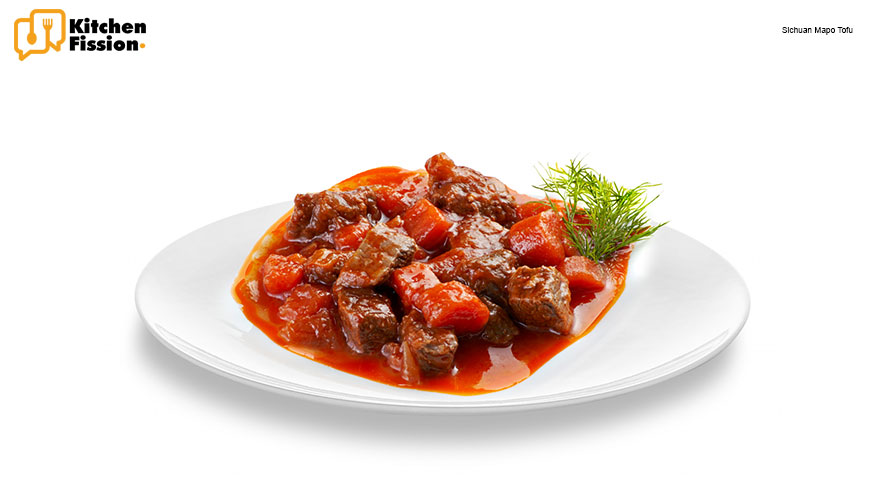
Scrumptious Dim Sum Platter:
A Dim Sum Platter is a delightful and popular Cantonese culinary tradition that offers an assortment of small, bite-sized dishes. It’s often enjoy during breakfast or brunch and is a social dining experience that showcases the diverse flavors and textures of Chinese cuisine. Let’s explore the key features that make a Scrumptious Dim Sum Platter a culinary adventure:
1. Assortment of Dim Sum:
- Steamed Dumplings: Dim Sum platters often feature various types of dumplings, including har gow (shrimp dumplings), siu mai (pork and shrimp dumplings), and crystal dumplings.
- Buns: Steamed buns filled with ingredients like barbecued pork (char siu bao), custard, or red bean paste.
- Rice Rolls: Delicate rice noodle rolls filled with ingredients such as shrimp, beef, or vegetables.
- Turnip Cake: Pan-fried or steamed cakes made from shredded radish and rice flour.
- Spring Rolls: Crispy rolls filled with a mixture of vegetables, meat, or seafood.
- Sesame Balls: Sweet, deep-fried balls with a crispy exterior and a sweet, often red bean paste or lotus seed paste interior.
2. Steaming and Frying:
- Dim Sum items are prepare using various cooking methods, including steaming, pan-frying, deep-frying, and baking. Each method imparts a distinct texture and flavor to the dishes.
3. Dipping Sauces:
- Dim Sum is typically accompanied by a variety of dipping sauces, such as soy sauce, chili sauce, vinegar, and hoisin sauce. These sauces enhance the flavors and add complexity to the dining experience.
4. Shared Dining:
- Dim Sum is often enjoy in a communal setting, where a variety of dishes are order and share among diners, fostering a sense of togetherness and culinary exploration.
5. Tea Pairing:
- A crucial element of the Dim Sum experience is tea. A selection of Chinese recipes, such as jasmine tea, oolong tea, or pu-erh tea, is traditionally serve alongside Dim Sum, providing a refreshing and palate-cleansing contrast to the flavors.
6. Variety of Flavors and Textures:
- Dim Sum offers a rich tapestry of flavors and textures, from the delicate and translucent dumpling wrappers to the crispy exteriors of spring rolls and sesame balls.
- The fillings range from savory to sweet, ensuring there’s something for every palate.
7. Cultural Significance:
- Dim Sum has deep cultural roots in Cantonese recipes and is an integral part of Chinese recipes traditions. It represents a form of social dining where families and friends gather to share a leisurely meal.
8. Adaptability:
- Dim Sum has transcended cultural boundaries and is enjoy globally. Restaurants worldwide offer their unique interpretations, adapting the concept to local tastes.
9. Artistry and Craftsmanship:
- Preparing Dim Sum requires culinary skill and attention to detail, as creating the perfect dumpling or rice roll demands precision and finesse.
10. Visual Appeal:
– A well-presented Dim Sum Platter is visually enticing, with an array of colors, shapes, and textures that invite diners to savor each dish.
In summary, a Scrumptious Dim Sum Platter is a culinary journey that offers a medley of flavors and textures, creating a vibrant and communal dining experience. Whether enjoyed in a traditional Cantonese teahouse or at a modern restaurant, it reflects the richness of Chinese recipes and the joy of shared meals with loved ones.
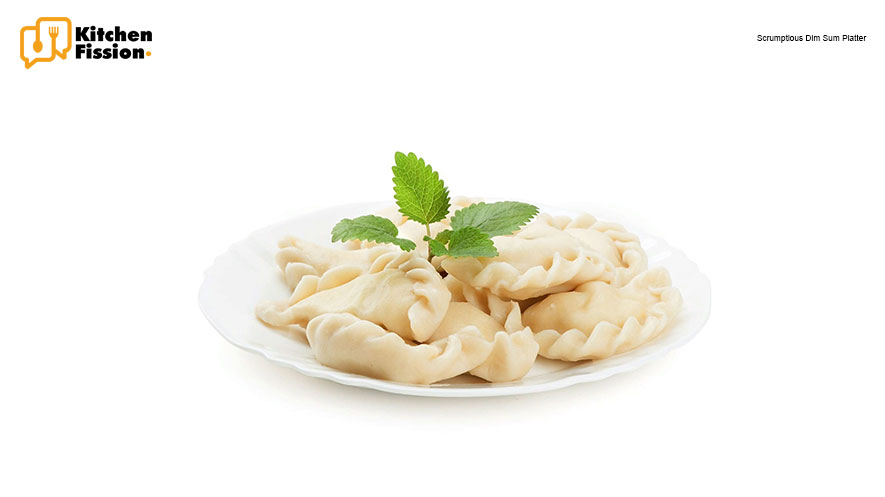
Savory Beef and Broccoli Stir-Fry:
Savory Beef and Broccoli Stir-Fry is a popular and flavorful Chinese recipes dish that combines tender strips of beef, vibrant broccoli florets, and a savory sauce. Known for its quick preparation and delicious taste, this stir-fry is a favorite in both home kitchens and Chinese restaurants. Let’s explore the key features that make Savory Beef and Broccoli Stir-Fry a delightful culinary choice:
1. Ingredients:
- Beef: Thinly sliced beef, such as flank steak or sirloin, is the star of the dish. The choice of beef ensures a tender and succulent result.
- Broccoli: Fresh broccoli florets add vibrant color, crispness, and a hint of bitterness that balances the dish’s savory flavors.
- Garlic and Ginger: Minced garlic and ginger contribute aromatic depth to the stir-fry.
- Soy Sauce: Provides a rich, salty, and savory base for the sauce.
- Oyster Sauce: Adds a subtle umami richness to the sauce.
- Cornstarch: Used to thicken the sauce and create a glossy coating for the beef and broccoli.
- Sesame Oil: Infuses the dish with a nutty aroma.
- Red Pepper Flakes (optional): For those who enjoy a bit of heat, red pepper flakes can be add to the sauce.
2. Quick Cooking:
- Stir-frying is a rapid cooking method where ingredients are cook in a hot wok or skillet for a short time. This technique preserves the color, texture, and nutritional value of the ingredients.
3. Sauce Creation:
- The savory sauce for Beef and Broccoli Stir-Fry is prepare by combining soy sauce, oyster sauce, cornstarch, and other seasonings. It forms a flavorful coating for the beef and broccoli.
4. Balance of Flavors:
- The dish strikes a balance between the savory and salty notes of the sauce, the tender and juicy beef, and the fresh, slightly bitter crunch of the broccoli.
5. Customization:
- Savory Beef and Broccoli Stir-Fry can be tailor to individual preferences. You can adjust the level of saltiness, sweetness, or spiciness in the sauce.
- Variations may include the addition of other vegetables like bell peppers or carrots for added color and flavor.
6. Presentation:
- The finished stir-fry is typically present on a plate or in a bowl, showcasing the vibrant green broccoli, glossy beef, and savory sauce.
7. Served Over Rice:
- The dish is often serve over steam white or brown rice, creating a balanced and satisfying meal.
8. Culinary Tradition:
- While Savory Beef and Broccoli Stir-Fry is consider Chinese recipes, it draws inspiration from Chinese culinary techniques and flavor profiles, showcasing the adaptability of Chinese cuisine to Western tastes.
9. Widespread Popularity:
- This dish has gained widespread popularity both in the United States and around the world due to its delicious flavors and quick cooking time.
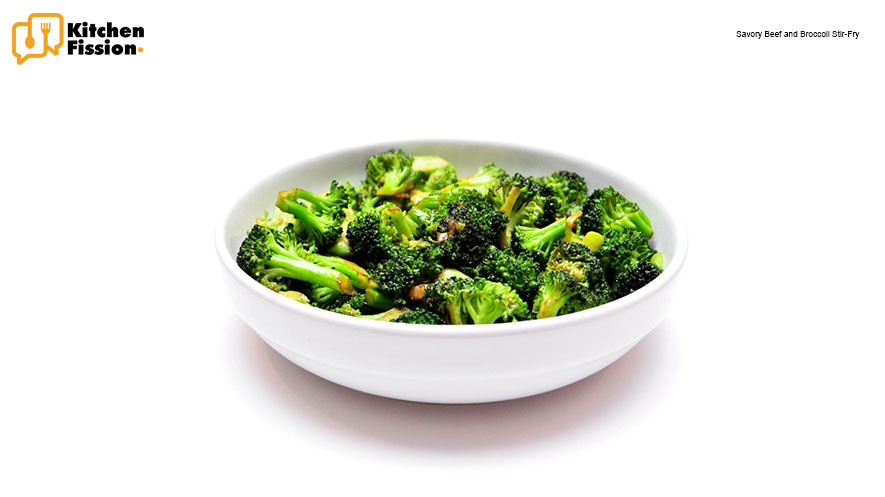
Homestyle Egg Fried Rice:
Homestyle Egg Fried Rice is a classic and versatile dish that’s cherish around the world. It’s know for its simplicity, yet it’s bursting with flavor and is a favorite in Chinese Recipes. Let’s explore the key features that make Homestyle Egg Fried Rice a beloved and satisfying meal:
1. Ingredients:
- Cooked Rice: Day-old or leftover rice works best, as it has a firmer texture and doesn’t become mushy when stir-fried.
- Eggs: Eggs are a central component, providing richness and protein.
- Vegetables: Common additions include diced onions, carrots, peas, and scallions. These veggies not only add flavor but also provide color and texture.
- Soy Sauce: Soy sauce is the primary seasoning, giving the dish its savory and umami notes.
- Garlic and Ginger: Minced garlic and ginger are use to infuse the dish with aromatic flavors.
- Sesame Oil: A drizzle of sesame oil adds a nutty aroma and depth of flavor.
2. Quick Cooking:
- Egg Fried Rice is prepare using a fast and high-heat cooking method know as stir-frying. This ensures that the ingredients cook quickly while retaining their distinct textures.
3. Layered Flavors:
- The dish achieves a harmonious blend of flavors. The eggs create a creamy texture, while the soy sauce and sesame oil provide a savory and slightly nutty taste.
4. Customization:
- Homestyle Egg Fried Rice is highly customizable. You can add or omit ingredients based on your preferences and what’s available in your kitchen.
- For protein, you can include diced cooked chicken, shrimp, or tofu.
5. Balanced Texture:
- The dish offers a delightful balance of textures, with the rice being tender but not sticky, the eggs providing creaminess, and the vegetables contributing a pleasing crunch.
6. Presentation:
- The finished dish is typically present on a plate or in a bowl, showcasing the colorful vegetables, scrambled eggs, and glistening grains of fried rice.
7. Versatility:
- Egg Fried Rice can be enjoy as a standalone meal or served as a side dish alongside other Chinese dishes. It’s a great way to use up leftover rice and vegetables.
8. Family Favorite:
- This dish is often a family favorite and a go-to choice for home cooks looking for a quick and satisfying meal that appeals to all ages.
9. Worldwide Popularity:
- Egg Fried Rice’s simplicity and deliciousness have make it popular not only in China but also in many other countries, where it often appears on Chinese restaurant menus.
10. Culinary Tradition:
– While Homestyle Egg Frie Rice is a staple in Chinese recipes, its worldwide popularity is a testament to its adaptability and appeal to diverse palates.
In summary, Homestyle Egg Fried Rice is a timeless and comforting dish known for its balance of flavors and textures. Its adaptability, quick preparation, and wide appeal have made it a beloved choice for both home cooks and diners with Chinese recipes around the world.
